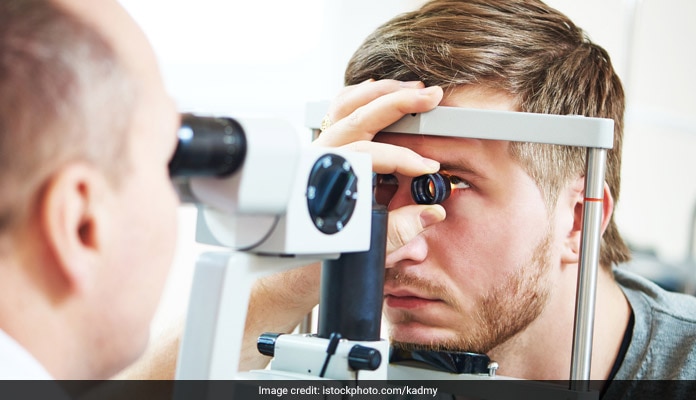Glaucoma is an eye disease which can lead to optic nerve damage, mainly because of excess pressure inside the eye.

Glaucoma is a silent theft of sight
HIGHLIGHTS
- Glaucoma is an eye disease which can lead to optic nerve damage
- Hardly are there any symptoms from the patients point-of-view
- Every person above the age of 40 must get regular eye examinations done
Glaucoma is an eye disease which can lead to optic nerve damage, mainly because of excess pressure inside the eye. The primary purpose of this week is to spread the word about the condition and why people need to get diagnosed with glaucoma well in time. The key to prevention is timely diagnosis and treatment before it gets any worse. And this year the theme is Green = Go get your eyes tested for Glaucoma: Save Your Sight!
What are the signs and symptoms of Glaucoma?
How does a person get to know that they are at risk of a deadly health condition? Of course, by spotting its early signs and symptoms!
However, Glaucoma is a silent theft of sight. It does not have any signs or symptoms which you can watch out for. But the two different types of glaucoma have some symptoms which can be kept in mind as a preventive measure.
Our expert, Dr. Ikeda Lal explains this condition. She says, "There are two types of glaucoma, open-angle glaucoma, and angle-closure glaucoma. In most cases, there hardly are any symptoms from the patient's point-of-view. The patient usually doesn't have any symptoms that he or she can watch out for. However, they can experience a painless and slow loss of vision over the years. It is very difficult for patients to notice that any such thing is taking place."
"Patient can also experience halos, glares and can feel that light is brighter than usual, headaches and a heavy feeling in the eye. All these are few common symptoms. It is very rare that the patient knows that he or she has glaucoma. For us (doctors), the signs come up after examination. The main sign is high pressure in the eye. Normal pressure is 10 to 21, but when it goes higher than that, it is considered high pressure in the eye. This requires proper examination. This high pressure affects the nerve which connects out an eye to the brain. It requires some tests to ascertain that the nerve fibers are functioning properly or not," she added.
1. Open-angle glaucoma
To begin with, there is open-angle glaucoma. This condition does not have any obvious symptoms which you can watch out for. However, as the disease progresses, you may start developing blind spots in your side vision. This condition is the actual silent thief of sight as most people do not see any symptoms of it till the damage becomes severe. As a preventive measure, you can stick to regular eye exams with your ophthalmologist. He or she can tell you how often you need to get examined.
2. Angle-closure glaucoma
This condition is backed by an attack, and the worst part is that even that attack does not have any early symptoms. Some of the early symptoms could include eye pain, headaches, halos and blurred vision. Patients should get this checked by an ophthalmologist as soon as possible. An angle-closure glaucoma attack can include the following:
- Pain in the eyes and forehead
- Vomiting
- Nausea
- Blurred vision
- The appearance of halos and rainbows
- Redness of the eye
"Glaucoma diagnosis is mainly done by an eye surgeon. Patients hardly get to know about it due to the absence of symptoms. When a patient undergoes an acute attack, it can lead to a sudden blurring of vision, redness in the eye, extreme pain and lights can look bright. Then it can be ascertained that the patient has gone through an acute attack because he or she has glaucoma," Dr. Lal explained
How to get glaucoma diagnosed in time?
Dr. Lal says that early diagnosis of glaucoma is of utmost importance. She says, "Every person above the age of 40 must get regular eye examinations done, especially for the eye pressure. There are certain risk factors for the development of glaucoma. The family history of this disease is one. If anyone in your immediate family or direct relatives suffered from this condition, then you are also at risk to some level. Besides this, if you have a very high plus number or minus number, then again your risk is higher than the rest. If the patient also has diabetes and has high body fat with a small neck, he or she is at a higher risk of glaucoma. These patients should definitely get checked for glaucoma even if they are younger than 40. Nevertheless, getting checked for glaucoma is a must for any person above the age of 40."
(Dr. Ikeda Lal is a Senior consultant ophthalmologist at Sir Ganga Ram Hospital)
Disclaimer: This content including advice provides generic information only. It is in no way a substitute for qualified medical opinion. Always consult a specialist or your own doctor for more information. NDTV does not claim responsibility for this information.
DoctorNDTV is the one stop site for all your health needs providing the most credible health information, health news and tips with expert advice on healthy living, diet plans, informative videos etc. You can get the most relevant and accurate info you need about health problems like diabetes, cancer, pregnancy, HIV and AIDS, weight loss and many other lifestyle diseases. We have a panel of over 350 experts who help us develop content by giving their valuable inputs and bringing to us the latest in the world of healthcare.














